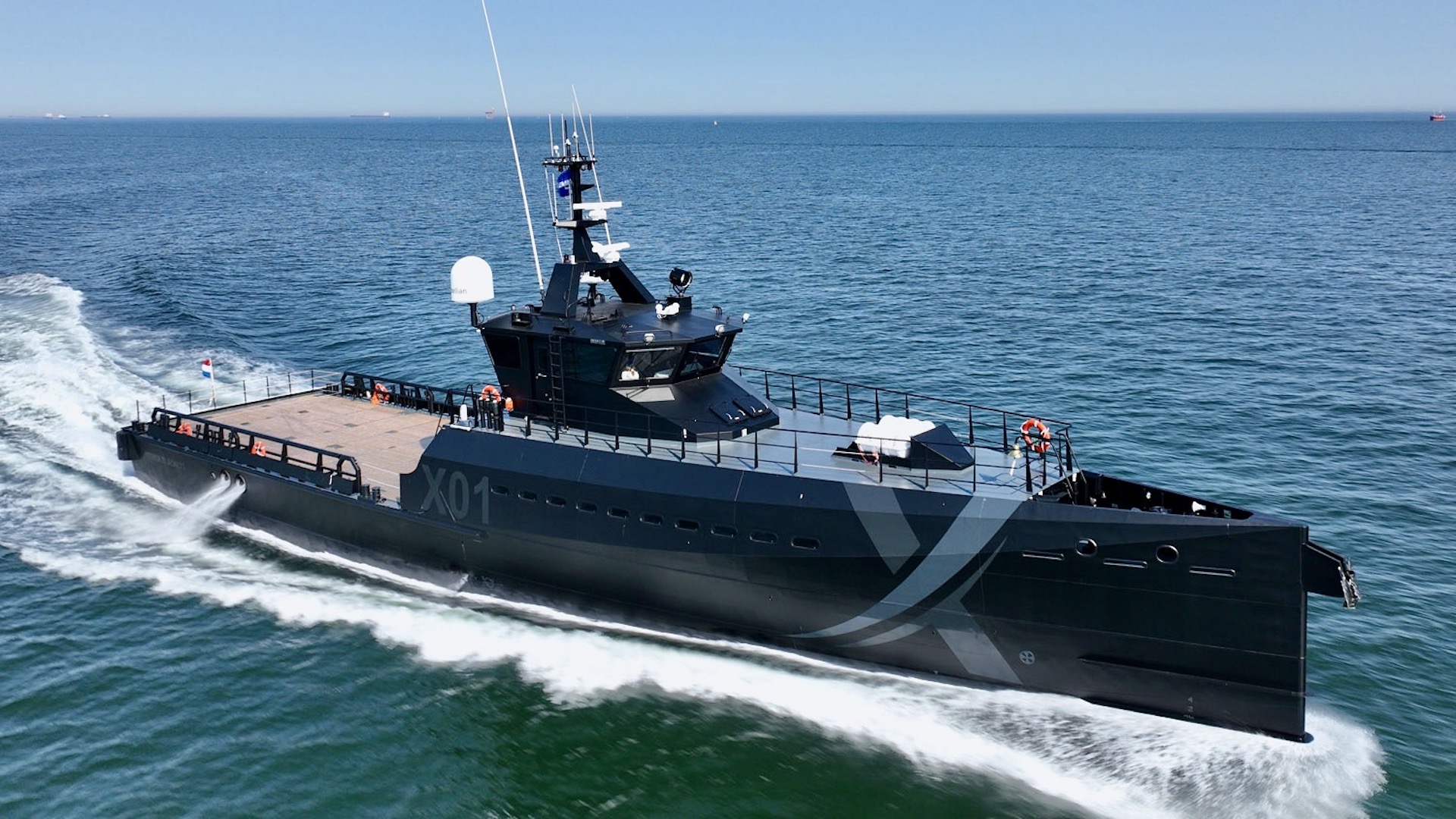A new, experimental vessel, the XV Patrick Blackett, also known by the hull number “X01,” has joined the U.K. Royal Navy. Arriving at Portsmouth harbor on the south coast of England on July 27, the ship was officially named during a ceremony at the harbor on July 29.
XV Patrick Blackett (XV standing for experimental vessel) will support Royal Navy trials for a wide array of new technologies, especially those pertaining to autonomous operations and unmanned systems.
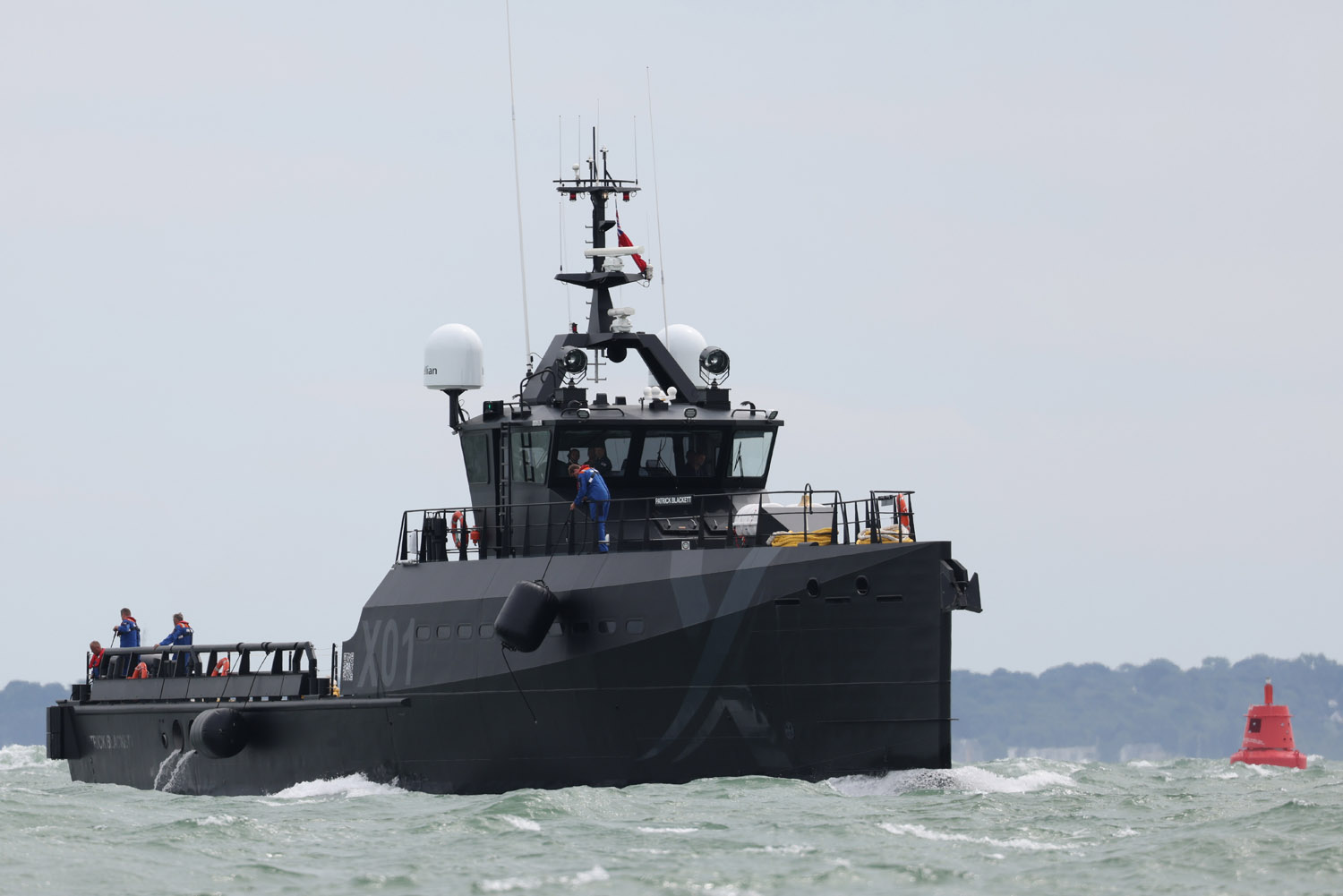
Two promotional videos have been released by the Royal Navy to promote their new vessel, which readers can watch below. NavyX, the Royal Navy’s “autonomy and lethality accelerator” responsible for fielding new and innovative technologies for the service, also posted a teaser video of the XV Patrick Blackett on Twitter.
At the ship’s naming ceremony on July 29, a ‘robot dog’ was appropriately chosen to initiate the smashing of the champagne bottle. While the ‘dog’ performed to command, it seems the champagne bottle did not.
Almost a year ago, in August 2021, the project which would result in XV Patrick Blackett was launched. As part of a precise set of requirements for a new experimental vessel set out by the U.K. Ministry of Defense, it was stipulated that the ship needed to have been previously built without having had previous owners. Special requirements were also set on the dimensions of the vessel – it was not to exceed 500 (metric) tons in displacement and run less than 158 feet in length. The Dutch shipbuilder, Damen Shipyard Group, was awarded the procurement contract for the Fast Crew Supplier (FCS) vessel by the Ministry of Defense.
A Fast Crew Supplier 4008 was down-selected for the program in January 2022. The vessel’s ownership was transferred to the Royal Navy in March, while work to adapt it to the Navy’s specifications began at Damen’s shipyard facility at Gorinchem in the Netherlands in April. XV Patrick Blackett was brought from the Netherlands to the U.K. largely by the same team which worked on its modifications. According to U.K. Ministry of Defense records, the total cost of procuring the ship (excluding VAT) was £9,333,151 or $11,350,325.

The Royal Navy states that XV Patrick Blackett can reach speeds of 20 knots – slightly slower than the advertised top speed of Damen’s FCS 4008, which is 25-30 knots. The FCS 4008 features a steel hull, with an aluminum superstructure, and has an overall length of around 135 feet. The FCS 4008’s core design sits in between the two primary design tiers of experimental unmanned surface vessels (USV) that the U.S. Navy is currently testing, and has a large open aft deck similar to the U.S. Navy’s Large Unmanned Surface Vessels (LUSVs) that can accommodate a wide variety of test gear, sensors, communications systems, and potentially even modular weapons systems. It is thought that the ship can carry two ISO containers on its deck which can be adapted to virtually any use.
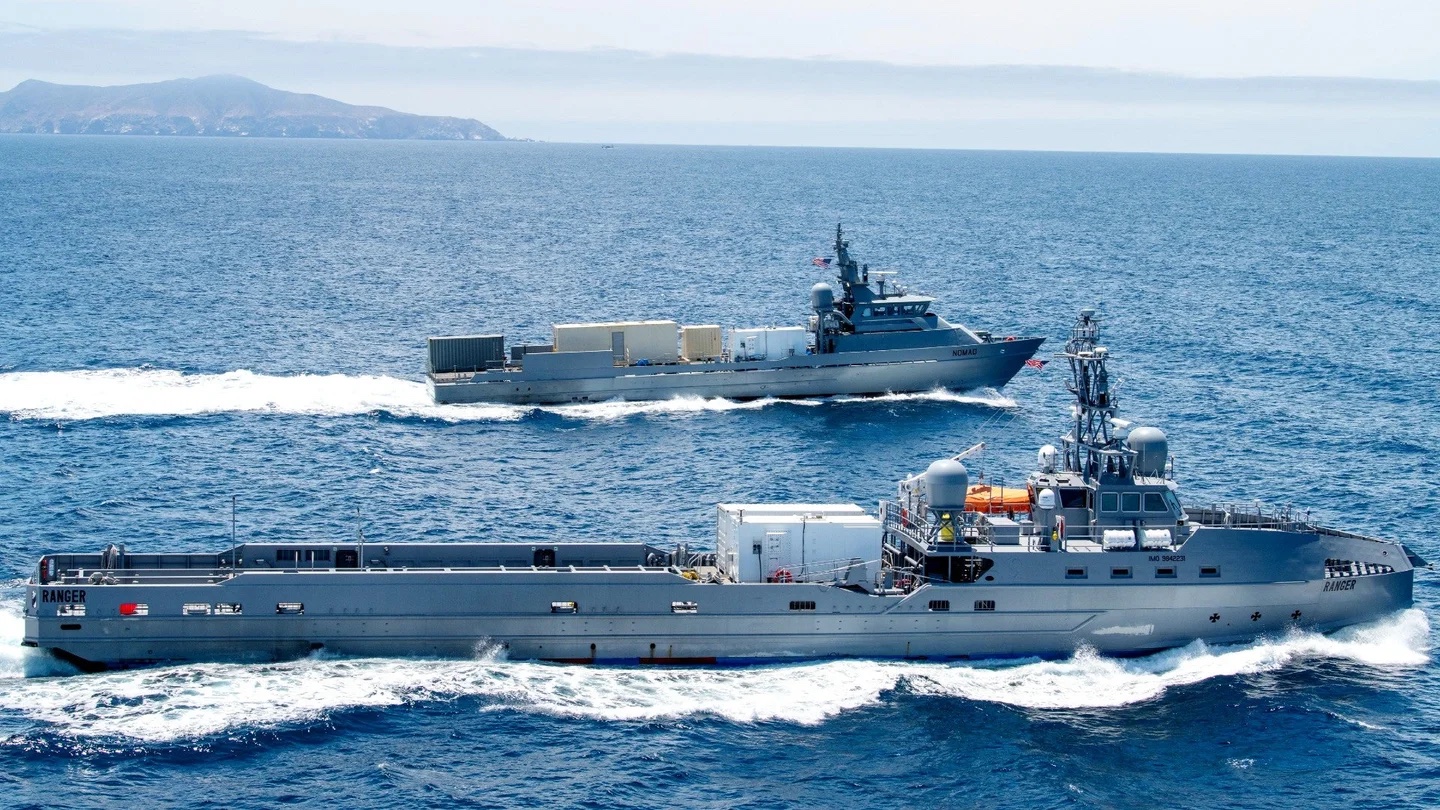
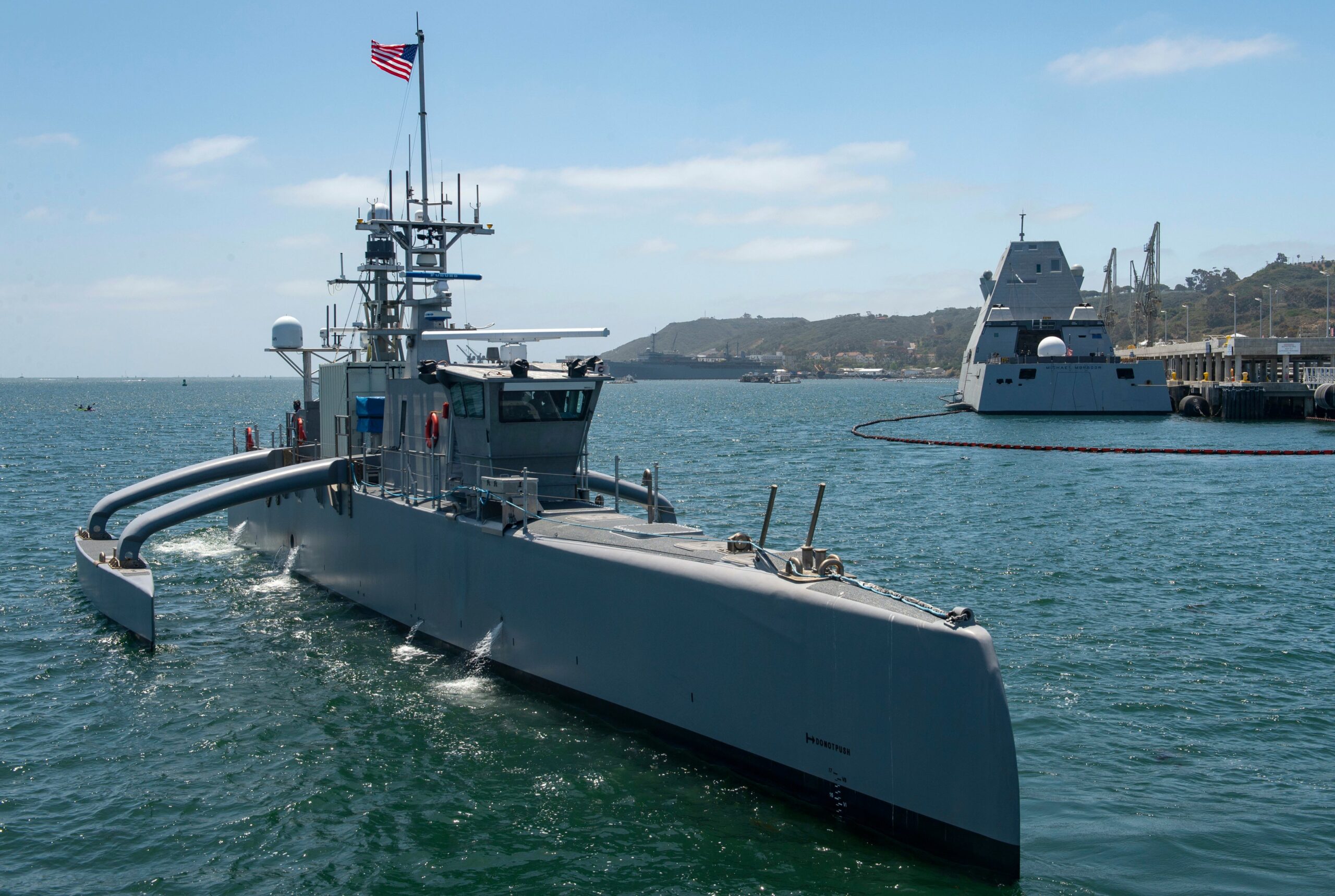
Five Royal Navy personnel will man the new ship – its first commanding officer will be Cdr. Samuel Nightingale, a naval warfare specialist on assignment to NavyX.
In terms of special modifications, XV Patrick Blackett will have a “plug and play” element to support the Royal Navy’s Persistent Operational Deployment Systems (PODS) concept, which aims to standardize and simplify the way it fields various capabilities. This means the vessel can be more easily adapted for drone and autonomous vessel testing, although it is not set up for unmanned operations at this time.
The Royal Navy and NavyX have been testing other tiers of unmanned surface vessels of late, including unmanned speed boats and minehunting boats. The service’s Technology and Innovation team confirms that XV Patrick Blackett will play an important role in the future testing of these platforms, taking the stress off Royal Navy warships to trial new capabilities and technologies. The ship will also be adaptable for the insertion of AI decision-making capabilities and other emerging autonomous technologies, but its mission is much wider than just those objectives.
Col. Tom Ryall, Head of NavyX, notes that “The arrival of this vessel [XV Patrick Blackett] is a pivotal moment for NavyX’s ability to deliver output for the Royal Navy. She will give us greater flexibility to experiment with novel military capabilities, and accelerate new technology, kit and concepts to the frontline.”
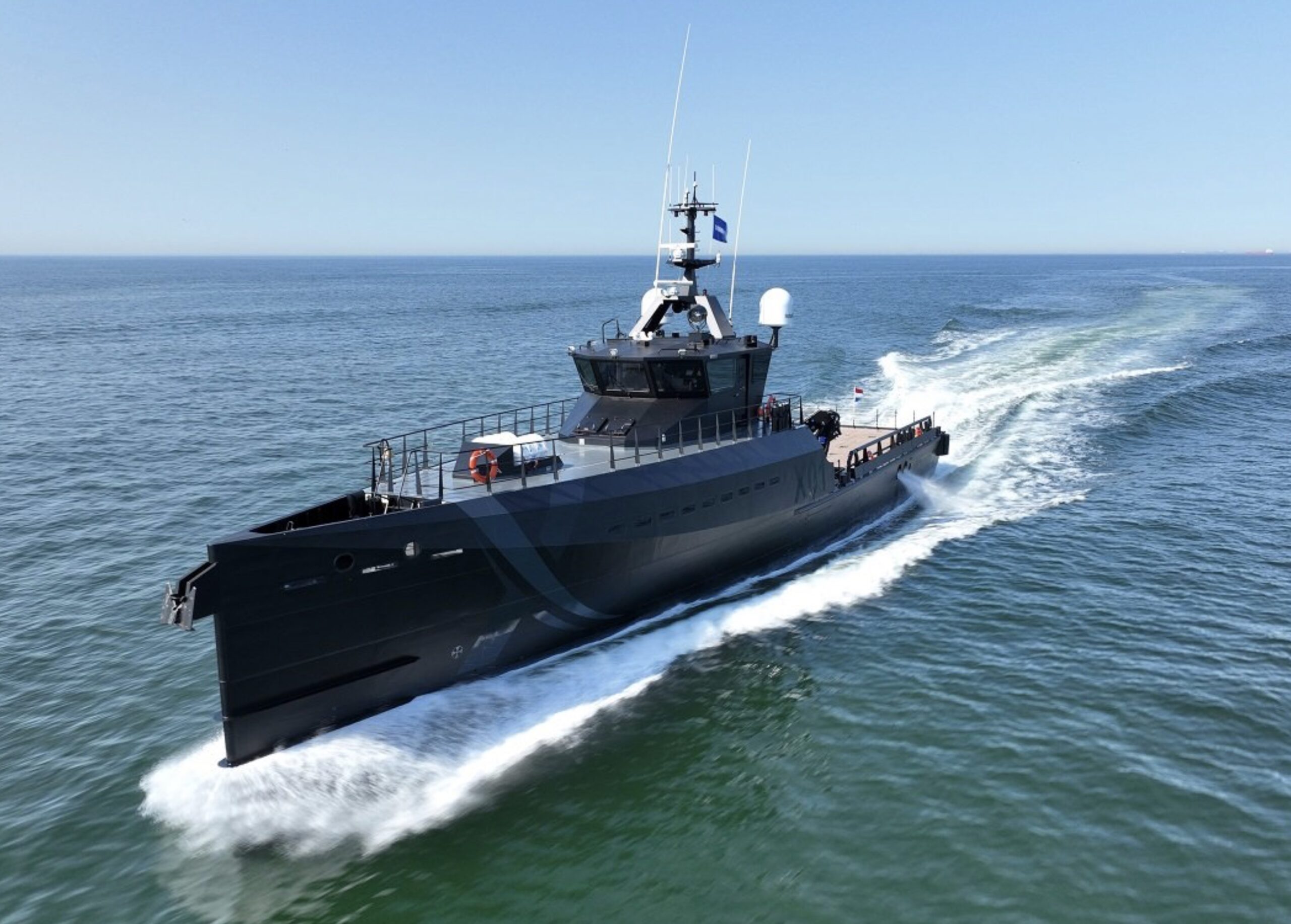
Rear Admiral James Parkin explained on Twitter why the Navy chose to name the ship after Patrick Blackett, a Royal Navy veteran, Nobel Prize winner, and previous President of the U.K.’s prestigious Royal Society. “As a scientist, he [Blackett] pioneered numerous developments in physics and made discoveries that shaped the modern world … Having fought in World War 1 as a naval officer, in World War 2 he was critical to the UK’s war efforts as an eminent scientific advisor … However, the Royal Navy has not, until now, found an appropriate way to honor a man who did so much for his nation, and the world.”
Crew members will now have the opportunity to train with the ship over the next few months before it goes to sea as a dedicated Royal Navy experimentation ship in the fall, Parkin said. The Royal Navy notes that in the future, XV Patrick Blackett will take part in “Royal Navy and NATO exercises, with the possibility of it being upgraded with autonomous technology.”
Whatever future upgrades the vessel may receive, its fast-tracked procurement is a testment to the Royal Navy’s increasing commitment to investing in experimental platforms that can help pave the way for fielding critical new operational concepts and capabilities.
Contact the author: oliver@thewarzone.com
